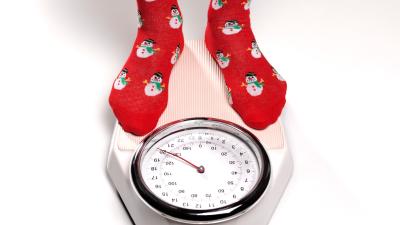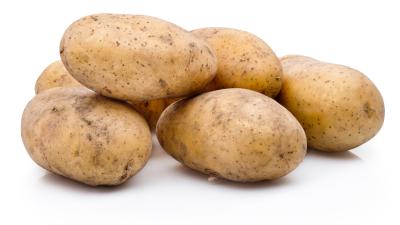Calcium and Strong Bones
The bone-thinning condition called osteoporosis can lead to small and not-so-small fractures. Many people believe that dairy products, like milk and cheese, are a good source of calcium. However, this is not the whole story. In fact, in a 12-year Harvard study of 78,000 mostly white women, those who drank milk two or more times a day had a higher incidence of hip fractures than those who rarely drank milk.1 Similarly, an observational study out of Sweden found that higher milk intake was associated with greater incidence of bone fracture.2 Although the overall results are mixed regarding milk and bone health, most research shows no benefit to drinking milk for bone health.3
How to Get Calcium Into Your Bones
1. Get calcium from greens, beans, and fortified foods.
In the United States, recommended calcium intake is 1,000 milligrams/day for men and women 19-50 years old, and 1,200 milligrams/day for women older than 51.4The most healthful calcium sources are green leafy vegetables and legumes, or "greens and beans" for short. Broccoli, Brussels sprouts, collards, kale, mustard greens, and other greens are loaded with highly absorbable calcium and a host of other healthful nutrients. The exceptions are spinach, beet greens, and Swiss chard, which contain lots of calcium but are also high in oxalates, which bind to calcium and reduce how much of it is absorbed.
Beans also contain calcium. There are more than 100 milligrams of calcium in a cup of black beans, and most varieties of beans contain 60 or more milligrams of calcium per cup of beans. Greens also contain magnesium, which your body uses along with calcium to build bones.
If you are looking for a more concentrated calcium source, calcium-fortified orange or apple juice, as well as fortified plant milks, contains 300 milligrams or more of calcium per cup in a form that is equally as absorbable as from cow’s milk.
Dairy products do contain calcium, but it is accompanied by animal proteins, growth factors, lactose sugar, occasional drugs and contaminants, and a substantial amount of fat and cholesterol.
2. Get vitamin D from the sun, or supplements if you need them.
Vitamin D controls your body's use of calcium.5 Increasing vitamin D intake has been shown to reduce fracture risk.6 About 15 minutes of sunlight on your skin each day normally produces all the vitamin D you need. If you get little or no sun exposure, you can get vitamin D from a supplement or fortified foods. The recommended dietary allowance is 600 IU (15 micrograms) per day.4 Cow’s milk is not a natural source of vitamin D, as it is added after production, and plant-based milks are fortified with comparable amounts.3
How to Keep Calcium in Your Bones
It’s not enough to get calcium into your bones. What is really critical is keeping it there. Here’s how:
1. Avoid excess salt.
Calcium in bones tends to dissolve into the bloodstream, then pass through the kidneys into the urine. Sodium (salt) in the foods you eat can greatly increase calcium loss through the kidneys.7 If you reduce your sodium intake to 1 to 2 grams per day, you will hold onto calcium better. To do that, avoid salty snack foods, canned goods with added sodium, processed foods such as cured meats, cold cuts, and cheese, and keep salt use low on the stove and at the table.
2. Exercise.
Exercise is vital for keeping calcium in the bones and increasing bone density. Benefits include preventing osteoporosis and promoting new blood vessel and bone growth.8 In a yearlong study of 320 postmenopausal women, those who completed aerobic, weight-bearing activity combined with weight lifting three times a week had a significant increase in regional bone density, compared with those who did not exercise.9 Moreover, physical activities help to stimulate increases in bone diameter, which can counteract the thinning of bones, and in turn, lessen the risk of fractures.10
3. Don't smoke.
Smoking can lead to reduced bone mass and decreases calcium absorption from food.11 A study of identical twins showed that, if one twin had been a long-term smoker and the other had not, the smoker had more than a 40% higher risk of a fracture.12
Calcium Supplements
Calcium supplements are commonly recommended to men and women as they age to promote bone health. Research on the risk and benefits of such supplementation is mixed. In a meta-analysis evaluating the occurrence of cardiovascular events in 11 placebo-controlled trials of calcium supplements, researchers found those taking supplements had about a 30% increased risk for heart attack. In addition, boosting overall calcium had no cardiovascular benefit.13 Another study, which analyzed cardiovascular health of 23,980 participants of the Heidelberg cohort in the European Prospective Investigation into Cancer and Nutrition (EPIC) study, aged 35-64, users of calcium-only supplements had a 70% increased heart attack risk.14
A recommendation by the U.S. Preventive Services Task Force, based on a review of randomized controlled trials, said that there’s not enough evidence to recommend postmenopausal women take supplements to prevent fractures.15 Therefore, to promote bone health, calcium intake should come from food sources instead.
Calcium supplementation alone may not be effective for fracture prevention.16 However, in a recent meta-analysis, women who took both calcium and vitamin D supplements had a 30% lower risk for hip fracture and a 15% lower risk for fracture overall, compared with those not taking these supplements.17 Combined calcium and vitamin D supplementation has also been found effective for treating low bone mineral density in certain populations taking medications.18,19,20
To determine whether you are a good candidate for calcium supplementation, check with your physician.
Preventing and Managing Osteoporosis
If you already have osteoporosis, you will want to speak with your doctor about exercises and perhaps even medications that can stop bone loss and rebuild healthy bone.
Osteoporosis in Men
Osteoporosis is less common in men than in women, and its causes are somewhat different. In about half the cases, a specific cause can be identified and addressed:21
- Steroid medications, such as prednisone, are a common cause of bone loss and fractures. If you are receiving steroids, you will want to work with your doctor to minimize the dose and to explore other treatments.
- Alcohol can weaken your bones by reducing the body's ability to absorb calcium and vitamin D and make new bone to replace normal losses. The effect is probably significant only if you have more than two drinks per day of spirits, beer, or wine.22
- A lower-than-normal amount of testosterone can encourage osteoporosis. More than 50% of men over 80 years of age have lower-than-normal levels of testosterone.23
Conclusion
Bone health is incredibly important and cannot be overlooked. Getting calcium from plant-based products is optimal, as these sources will allow you to meet the daily recommended amounts while also providing you with other essential nutrients. The methods outlined here to keep the calcium in your bones are much safer than taking calcium supplements and will help to prevent osteoporosis. Remember: Osteoporosis is much easier to prevent than to treat. Prevention of osteoporosis should begin in childhood and continue throughout one’s life.
References
- Feskanich D, Willett WC, Stampfer MJ, Colditz GA. Milk, dietary calcium, and bone fractures in women: a 12-year prospective study. Am J Public Health. 1997;87(6):992-997. doi:10.2105/ajph.87.6.992
- Michaëlsson K, Wolk A, Langenskiöld S, et al. Milk intake and risk of mortality and fractures in women and men: cohort studies. BMJ. 2014;349:g6015. doi:10.1136/bmj.g6015
- Cullimore JP, Herby AR, Paul-Quinn JL, Levin S, Stancic S. The nutritional content of animal and plant milks and their health implications. International Journal of Disease Reversal and Prevention. 2023;5(1). doi:10.22230/ijdrp.2023v5n1a363
- Committee to Review Dietary Reference Intakes for Vitamin D and Calcium, Food and Nutrition Board, Institute of Medicine. Dietary Reference Intakes for Calcium and Vitamin D. Washington, DC: National Academy Press; 2011.
- Holick MF, Garabedian M: Vitamin D: photobiology, metabolism, mechanism of action, and clinical applications. In Primer on the metabolic bone diseases and disorders of mineral metabolism. 6th edition. Edited by Favus MJ. Washington, DC: American Society for Bone and Mineral Research; 2006:129-137.
- Bischoff-Ferrari HA, Willett WC, Wong JB, Giovannucci E, Dietrich T, Dawson-Hughes B. Fracture prevention with vitamin D supplementation: a meta-analysis of randomized controlled trials. JAMA. 2005;293:2257-2264. doi:10.1001/jama.293.18.2257
- Park SM, Joung JY, Cho YY, et al. Effect of high dietary sodium on bone turnover markers and urinary calcium excretion in Korean postmenopausal women with low bone mass. Eur J Clin Nutr. 2015;69(3):361-366. doi:10.1038/ejcn.2014.284
- Tong X, Chen X, Zhang S, et al. The effect of exercise on the prevention of osteoporosis and bone angiogenesis.Biomed Res Int. 2019;2019:8171897. doi:10.1155/2019/8171897
- Going S, Lohman T, Houtkooper L, et al. Effects of exercise on bone mineral density in calcium-replete postmenopausal women with and without hormone replacement therapy. Osteoporos Int. 2003;14:637-643. doi:10.1007/s00198-003-1436-x
- Borer KT. Physical activity in the prevention and amelioration of osteoporosis in women: interaction of mechanical, hormonal and dietary factors. Sports Med. 2005;35:779-830. doi:10.2165/00007256-200535090-00004
- Bashaireh AM, Haddad LG, Weaver M, Chengguo X, Kelly DL, Yoon S. The effect of tobacco smoking on bone mass: an overview of pathophysiologic mechanisms. J Osteoporos. 2018;2018:1206235. doi:10.1155/2018/1206235
- Hopper JL, Seeman E. The bone density of female twins discordant for tobacco use. N Engl J Med. 1994;330:387-392.
- Bolland MJ, Avenell A, Baron JA, et al. Effect of calcium supplements on risk of myocardial infarction and cardiovascular events: meta-analysis. BMJ. 2010;341:c3691-c3700. doi:10.1136/bmj.c3691
- Li K, Kaaks R, Linseisen J, Rohrmann S. Associations of dietary calcium intake and calcium supplementation with myocardial infarction and stroke risk and overall cardiovascular mortality in the Heidelberg cohort of the European Prospective Investigation into Cancer and Nutrition study (EPIC- Heidelberg). Heart. 2012;98:920-925. doi:10.1136/heartjnl-2011-301345
- US Preventive Services Task Force. Vitamin D, calcium, or combined supplementation for the primary prevention of fractures in community-dwelling adults: US Preventive Services Task Force recommendation statement. JAMA. 2018;319(15):1592-1599. doi:10.1001/jama.2018.3185
- Uusi-Rasi K, Kärkkäinen MU, Lamberg-Allardt CJ. Calcium intake in health maintenance - a systematic review. Food Nutr Res. 2013;57:1-15. doi:10.3402/fnr.v57i0.21082
- Weaver CM, Alexander DD, Boushey CJ, et al. Calcium plus vitamin D supplementation and risk of fractures: an updated meta-analysis from the National Osteoporosis Foundation. Osteoporos Int. 2016;27:367-376. doi:10.1007/s00198-015-3386-5
- Gruppen MP, Davin JC, Oosterveld MJ, et al. Prevention of steroid-induced low bone mineral density in children with renal diseases: a systematic review. Nephrol Dial Transplant. 2013;28:2099-2106. doi:10.1093/ndt/gft090
- Overton ET, Chan ES, Brown TT, et al. Vitamin D and calcium attenuate bone loss with antiretroviral therapy initiation: a randomized trial. Ann Intern Med. 2015;162:815-824. doi:10.7326/M14-1409
- Lazzari AA, Dussault PM, Thakore-James M, et al. Prevention of bone loss and vertebral fractures in patients with chronic epilepsy--antiepileptic drug and osteoporosis prevention trial. Epilepsia. 2013;54(11):1997-2004.doi:10.1111/epi.12351
- Peris P, Martínez-Ferrer A, Monegal A, et al. Aetiology and clinical characteristics of male osteoporosis. Have they changed in the last few years?. Clin Exp Rheumatol. 2008;26(4):582-588.
- Kanis JA, Johansson H, Johnell O, et al. Alcohol intake as a risk factor for fracture. Osteoporosis Int. 2005;16:737-742.
- Stanworth RD, Jones TH. Testosterone for the aging male; current evidence and recommended practice. Clin Interv Aging. 2008;3(1):25-44. doi:10.2147/cia.s190








